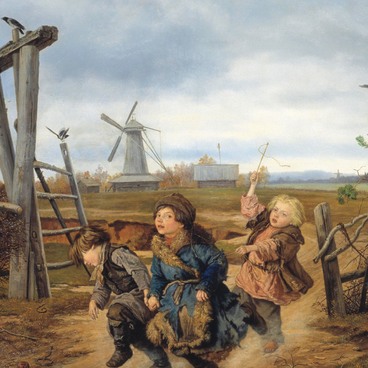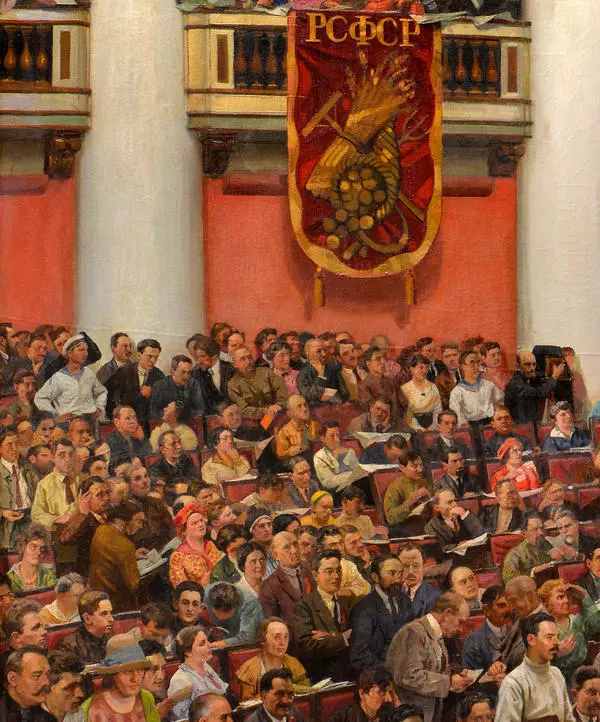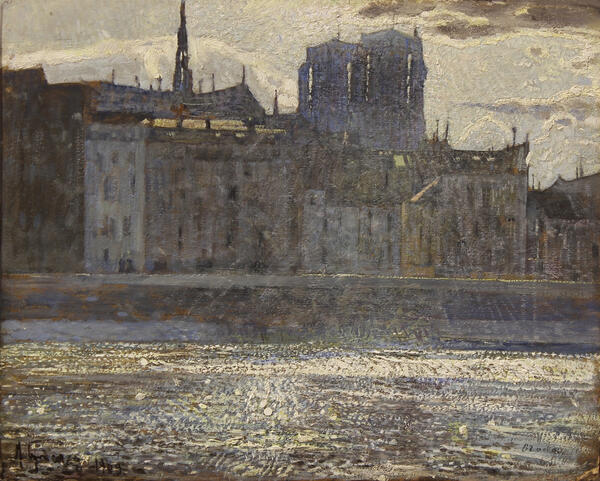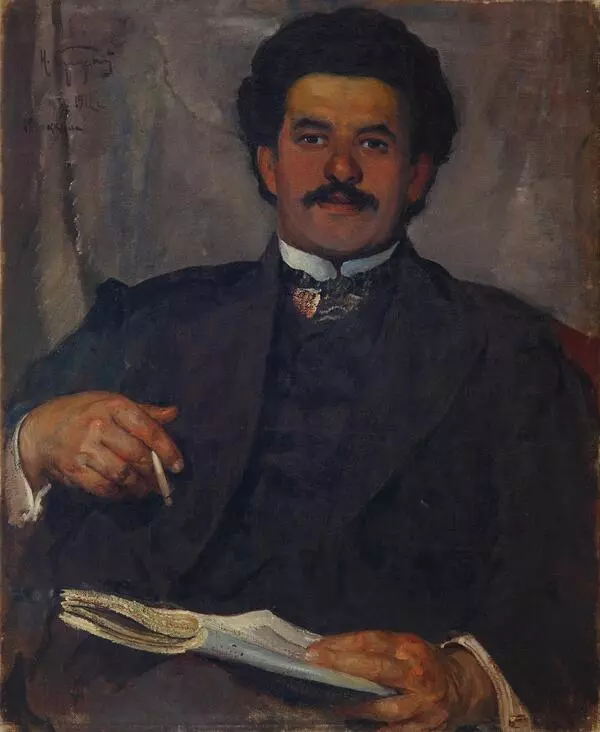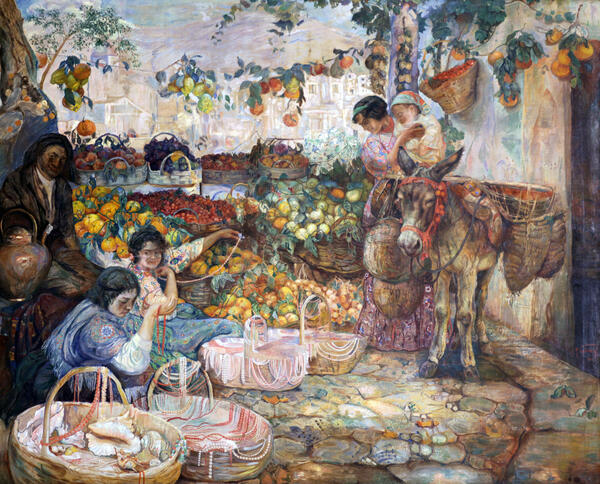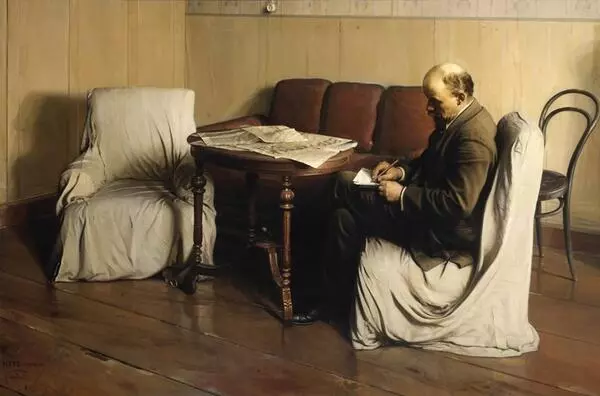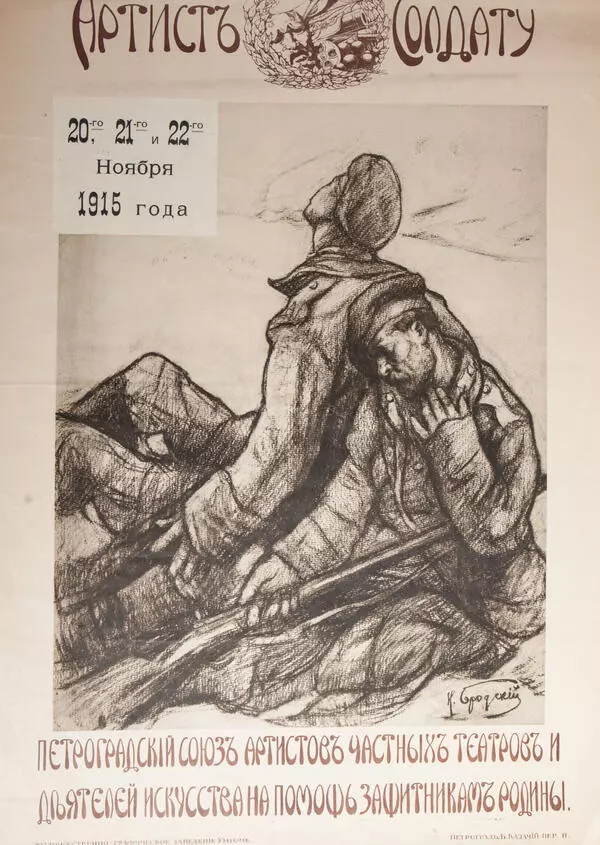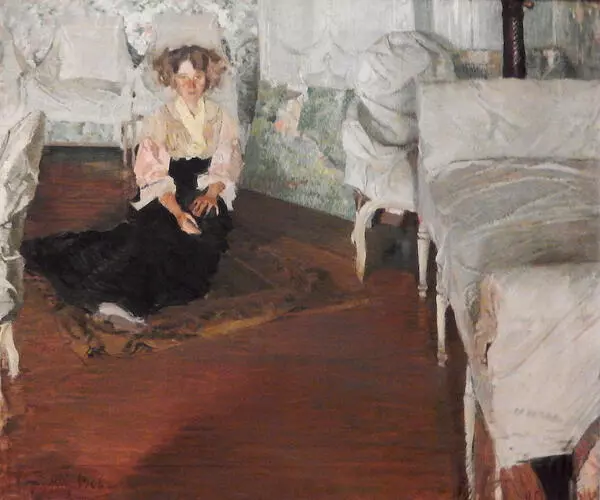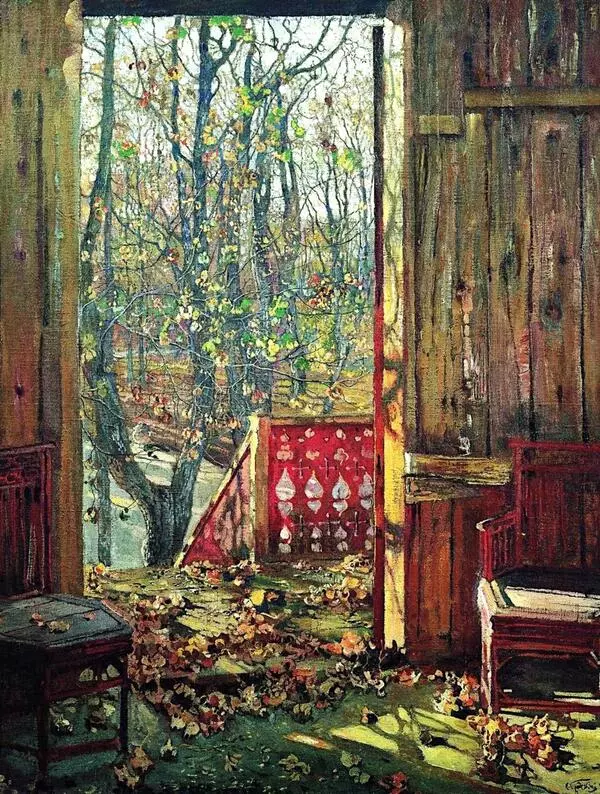Isaak Brodsky was born in 1883 to a family of a merchant and landowner in the Taurida Governorate. He received his primary training at Odessa Art Academy, and in 1903-1907, he attended the class of Ilya Repin, a great Russian painter, at the Imperial Academy of Arts in Saint Petersburg. After the graduation, the Academy paid for Isaak’s several trips to Europe where he focused on studying the heritage of prominent western masters.
Brodsky was a member of a great many influential artistic associations, i.e. the World of Art, the Itinerants, the Union of Russian Artists, the Association of Artists of Revolutionary Russia etc. During the Soviet epoch, he made a brilliant career as a teacher, and in 1934 he was appointed Chief of the Academy of Arts where he invited many prominent artists to teach there.
Before the revolution, Brodsky released several paintings of fireworks. The last one was made in 1916, and that last painting of fireworks is now carefully exhibited with the collection of the Rybinsk Museum. It is notably different from its predecessors due to the exquisite ornamentation of the smaller details and the colors.
Despite his love for the realistic art, in his figurative landscapes Brodsky frequently pursues symbolistic and modernistic techniques. Critics used to refer to this combination as “symbolistic fantasy”. The painting in focus is purely ornamental. It shows a scene that feels more like a fairytale rather than a real cityscape: the multicolored festive fireworks share its bright color with the emerald sky, the streets and house windows are brightly lit and reflect the multicolored lights.
At the forefront, there is a narrow strip of the opposite shore, on the right there is a corner of a small house with brightly lit windows. The backdrop of the green sky highlights tree shadows with their delicate lace of leaves and branches that look more like a curtain in a theater as they frame the picture.
The lit windows, the rhyme of the town skyline reflecting in the river, the walking people, the docked boats, all these smallest details are masterfully used by Brodsky to create the fairy-like atmosphere of a beautiful life. The artist chooses for himself the role of an impartial observer watching over the evening fairy play from the opposite shore. He understands that the festivities will soon be over to melt into a transient beautiful memory.
Brodsky was a member of a great many influential artistic associations, i.e. the World of Art, the Itinerants, the Union of Russian Artists, the Association of Artists of Revolutionary Russia etc. During the Soviet epoch, he made a brilliant career as a teacher, and in 1934 he was appointed Chief of the Academy of Arts where he invited many prominent artists to teach there.
Before the revolution, Brodsky released several paintings of fireworks. The last one was made in 1916, and that last painting of fireworks is now carefully exhibited with the collection of the Rybinsk Museum. It is notably different from its predecessors due to the exquisite ornamentation of the smaller details and the colors.
Despite his love for the realistic art, in his figurative landscapes Brodsky frequently pursues symbolistic and modernistic techniques. Critics used to refer to this combination as “symbolistic fantasy”. The painting in focus is purely ornamental. It shows a scene that feels more like a fairytale rather than a real cityscape: the multicolored festive fireworks share its bright color with the emerald sky, the streets and house windows are brightly lit and reflect the multicolored lights.
At the forefront, there is a narrow strip of the opposite shore, on the right there is a corner of a small house with brightly lit windows. The backdrop of the green sky highlights tree shadows with their delicate lace of leaves and branches that look more like a curtain in a theater as they frame the picture.
The lit windows, the rhyme of the town skyline reflecting in the river, the walking people, the docked boats, all these smallest details are masterfully used by Brodsky to create the fairy-like atmosphere of a beautiful life. The artist chooses for himself the role of an impartial observer watching over the evening fairy play from the opposite shore. He understands that the festivities will soon be over to melt into a transient beautiful memory.

